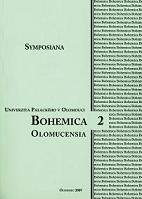PACIENTKA DR. HEGLA VE VESELÉM PLÁŽOVÉM KOMPLETU (ČASOPIS EVA NA POZADÍ POPULÁRNÍCH ČASOPISŮ PRO ŽEN
THE PATIENT OF DR. HEGL IN A LOVELY BEACHWEAR. TTHE MAGAZINE „EVA“ AT THE BACKGROUND OF POPULAR MAGAZINES FOR WOMEN
Author(s): Blanka HemelíkováSubject(s): Literary Texts
Published by: Univerzita Palackého v Olomouci
Summary/Abstract: Traditionally, the less legitimized cultural field of popular literature is conceived in sharp cultural contrast to the legitimized field of high literature. However, detailed research has revealed many cultural contacts instead of cultural clashes which are not nugatory in comparison with the clashes. We want to conduct research further in this direction. We are concerned with the popular Czech magazines for women in the 20's and 30's of the 20th century and we want to explore just the contacts of the high and the low. Thus, we want to show two editorial conceptions of popular magazines, the standard magazine and, on the other hand, the cultivated one, which attempted to gap the bridge between high and popular literature. This attempt is illustrated by the magazine Eva. Magazine for modern woman (1928 –1943), published by company Melantrich, which attempted to combine the "successful formula" of the magazines for women with the aesthetic quality (successful formula means the combination of pictorial content and serialized popular fiction). Thus Eva was intended both for discerning audience and middle-class and did not want to elevate above other magazines for women, i. e. family-oriented Hvězda (The Star), List paní a dívek (Magazine for Women and Girls) and Pražanka (The Woman of Prague). Eva gained literary prestige by good novel writers, such as Marie Pujmanová, Božena Benešová, Olga Scheinpflugová and, in contrast to other magazines, by cultural journalism written by leading cultural figures, such as Bedřich Fučík, Marie Majerová, E. F. Burian. However, together with cultural refinement, Eva took up important features of other popular magazines, e.g. more conventional reading, conventional journalism defending sentimental novels for women, and, what is more, the way of pictorial accompaniment to the published novels. The novels were not illustrated, but photographs of model costumes were adjoining the text, unrelating to the content. The inappropriate photographs reduced the cultural status of the novels by aligning them more with other conventional "consumer objects"than "literary artifacts". Aas a result of the editorial programme, amalgam arose there which proved to be quite succesful and Eva was published to 1943. However, ironically, the photograph accompaniment of model costumes "killed" up one of the much prestigious novels of Eva, Pacientka dr. Hegla (The Patient of dr. Hegl) by Marie Pujmanová. We argue, that instead of developing reader's empathy for the deal of a heroine as an unmarried mother, the effect was that the women readers were looking forward to examine other beautiful model costumes.
Journal: Bohemica Olomucensia
- Issue Year: 1/2009
- Issue No: 2
- Page Range: 108-114
- Page Count: 9
- Language: Czech

